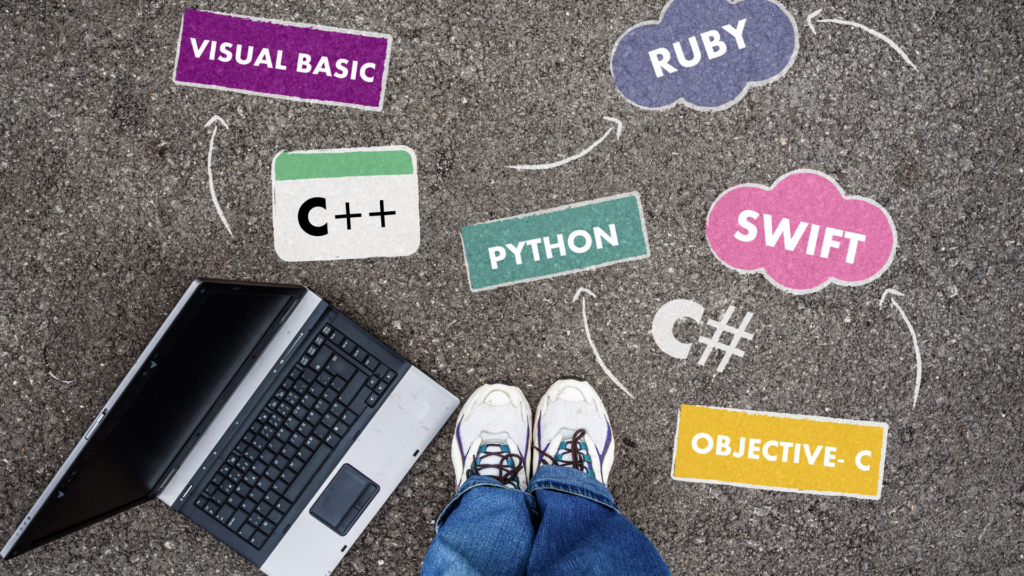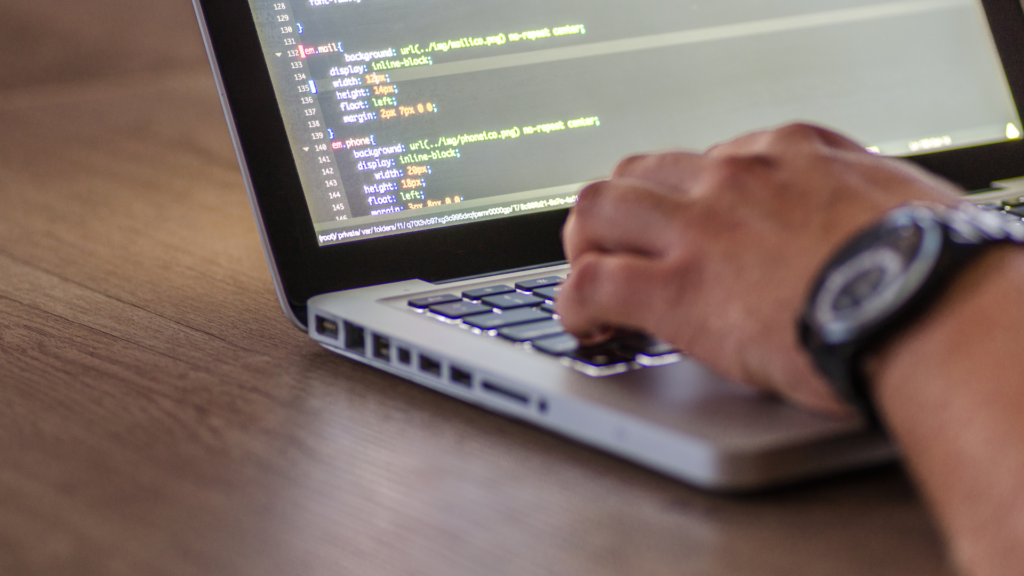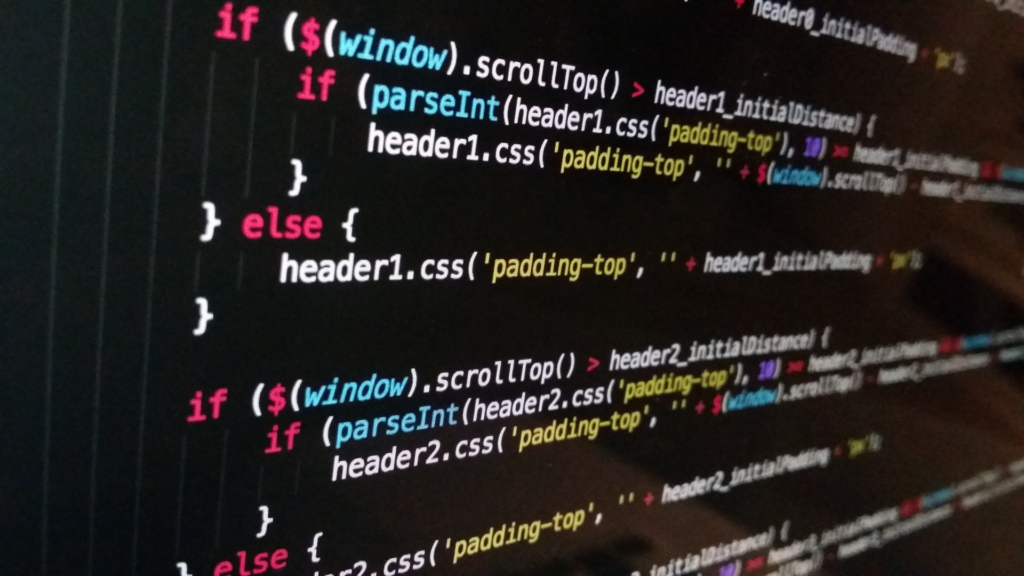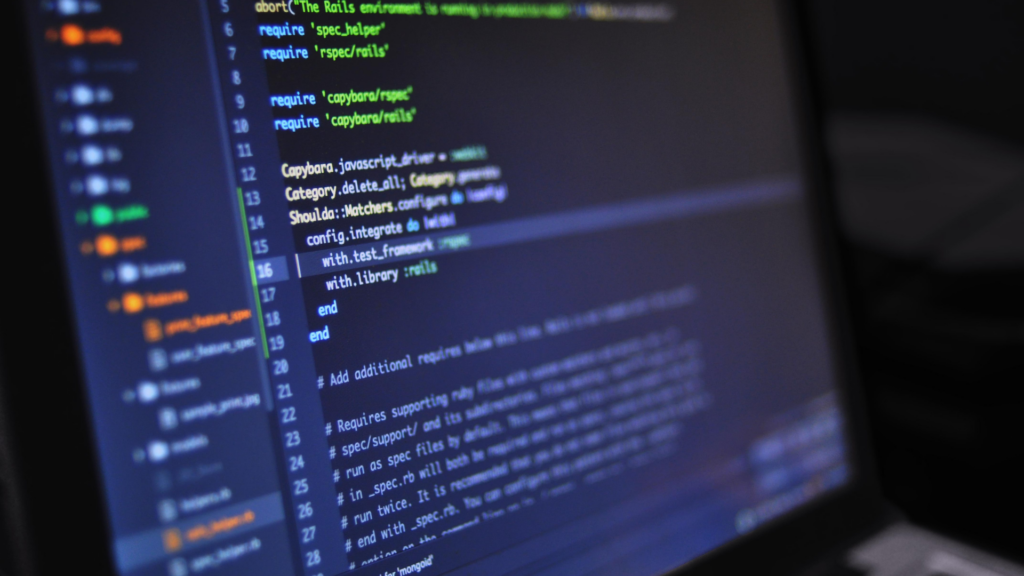
Maybe you are wanting to develop an app for your company, but your mind is asking you how long does it take to develop an app?
You need to know this in order to establish a timeframe for the launch of your product and create a strategy to execute that timeline.
Depending on the scale of the project and the method you use, the time required may vary.
It will take less time to develop a smaller app than a larger one. It all depends on what you want to build.
A simple app may take three months to develop, while an average app will take 3-6 months, even though it’s hard to give an accurate timeline that fits every situation.
A Walkthrough Of An App Development Project
Before moving on to the discussion, let us introduce you with the steps of developing an app.
Step 1: Collecting requirements
Collecting requirements for an app is a critical stage in the development process. It helps to ensure that the application is developed in a way that meets the needs and expectations of the end user.
The main requirement for developing an app is a clear idea of what it will do and how it will work.
This can be determined by conducting market research, talking with potential customers, or even just by thinking about what would be helpful for you as an end user.
It takes one or three weeks to collect requirements because so many things need to be considered when designing an application.
This can include how users will interact with the product, navigating through it, what kinds of features it should have, etc.
It takes one to three weeks to collect requirements.
Step 2: Planning your app
Planning is a crucial part of the process of developing an app. It can be costly in terms of time and money. The first step is to decide what you want your app to do, how it will work, and whether or not you need an app.
The next step is to choose a platform for your app: iOS, Android, or Windows Phone. Each has advantages and disadvantages, so make sure you know what they are before making your choice.
Once you have decided which platform you want to develop on, make sure that it can handle everything that the app needs to do. If not, then either change the functionality or find another platform that can do what you need it to do.
Also, to get started with your planning, you’ll need to ask yourself some questions:
- What needs does the app need to fill?
- What are the goals of the app?
- How will the app accomplish those goals?
- How is the app going to be marketed and made available?
Once you’ve answered these questions, you can create a plan for your app’s development.
It also takes around one to three weeks to plan the entire process.
Step 3: Create a prototype
The first step in creating a prototype for an app is to understand the purpose of the app. A prototype can be a simple sketch or a more detailed diagram illustrating how the app will function and look.
This initial step can take anywhere from 1 to 2 weeks to complete, depending on what level of detail you want to include in the prototype.
Once you have determined the purpose of your app, you should start working on your wireframe. The wireframe is a visual guide describing the user interface’s look and functions.
This process typically takes around 1-2 weeks and should include rough sketches and more detailed diagrams.
Once you have completed both of these steps, it’s time to move on to development. Whether with native or hybrid development, this part will take roughly two weeks to complete based on your project requirements.
Step 4: Designing the app
Designing an app is a big task involving many different aspects. The first thing to do is to decide on the type of app you want to create and what platform it will be built for (iOS, Android, etc.).
This will help you make all the necessary decisions regarding your design and development process. Once you have settled on this, it’s time to start designing your app.
Here we will be discussing the entire process of designing the app.

Brainstorming
Brainstorming is the first step in the design process. It’s when you gather your team and get everyone’s thoughts on what they’d like to see in the app.
You may already have a pretty good idea of what you want your app to do and how it should look, but it’s essential to ensure everyone else has their say before building anything.
Brainstorming doesn’t have to be complicated or time-consuming; you need to get everything out of your head and onto paper so that other people can see it.
This will help you identify problems before you’ve invested too much time into a solution that won’t work for everyone or for various reasons.
Feature prioritization
The next step is feature prioritization. This is where you decide which features are most important for your app.
Start by listing out all of the different things that feature prioritization could include in your app. Then rank them from 1–10 based on which ones are most important to your business model and target audience.
When deciding which features should go into an app, it’s essential to consider how each one will affect the user experience.
For example, if there’s a feature that would require too much work or cost more money than expected, it might not be worth including at all.
User-Centric Design
User-Centric Design is a method of designing an app that focuses on the users’ needs. It involves a series of steps and techniques to ensure that you create an app that works for your users.
The first step in User-Centric Design is to survey your target audience to see their needs. You will want to ask what they like and don’t like about other apps, why they use them and how often they use them.
After this, you will want to analyze your results. Look at the data in terms of demographics, age, gender, and location and determine if there are any trends among your users’ answers.
Feature prioritization is about deciding which features will be most important for your app and which ones can be left out or delayed until later versions of the product.
Finally, it identifies which features may seem necessary but can actually.
Wireframing
Wireframing is the next step after you’ve done your user-centric design.
It’s all about giving your app a backbone. Wireframing is essentially the process of sketching out the layout and structure of your app so that you can get an idea of what it’ll look like and how it’ll work.
Wireframes are usually very rough sketches of each screen, with basic information about what it’ll contain: text, buttons, images, etc.
You should do wireframe sketches in pencil because they’re meant to be permanent! You can change them as often as you want while working on an app and developing new features or ways to improve it.
Step 5: Creating the backend of the app
The backend of the app collects services and systems that enable your app to function. It’s where all the data is stored, and it’s what allows your users to interact with the app.
Your backend team will be responsible for ensuring that your customers have a positive experience using your product.
They’ll also be responsible for keeping those customers happy by adding new features and fixing bugs.
If you’re getting started on building an app, one person might be all it takes if you’re creating a complex service that requires multiple systems working together to function. Then you might need a whole team of developers working together to make it happen.
Step 6: Creating mockups
Creating mockups to develop an app is an essential part of the development process. It is a way to bring your ideas and visions to life before you begin working on the app.
You can create mockups for your app using various tools and software, such as Balsamiq or Sketch. You can also use pen and paper to sketch out your ideas and create mockups that way.
There are many different tools available for creating mockups, so you will want to choose one that gives you the best results for your needs.
The first step in creating mockups to develop an app is coming up with an idea for what you want your app to look like, how it will work, and what features it will have.
Then, once you have an idea of what you want the app to be like, start sketching out some basic designs of how it might look on paper or using software like Balsamiq or Sketch.
This will help give you some ideas about what features should be included in the app and how they should all work together seamlessly when they’re all put together on one screen.
It takes two or seven or even upto 13 weeks to create mockups.
Step 7: Quality assurance testing
Quality assurance testing is a process in which your app is tested for bugs, defects, and any other issues that might arise during the development process.
Quality assurance testing is crucial to the development cycle because it helps you identify and fix problems before they get out into the wild.
The length of time it takes to do quality assurance testing varies depending on what type of app you’re developing and how many people are working on it.
For example, if you have a small team working on your app, it could take a few days or weeks to complete quality assurance testing.
However, if you’re working with a large team or have hired an outside firm to assist with the development, it may take several months or even years before all the bugs have been resolved.


How Long Does It Take to Develop an App-Based Product?
Consider a slew of variables when creating an app and predicting its timeline.
Here, we’ve gathered and analyzed a few of the variables to see how they might affect the chronology.
Factor 1: A Concept’s Difficulty
The length of an app’s development depends primarily on the app’s complexity. The amount of screens, features, and jobs in the product is a factor in this calculation.
The level of effort needed to develop and design the app depends on how complicated the concept is.
A simple app can be designed in a few weeks, whereas a complicated app can take many months. Next, work on the backend and frontend, followed by testing.
Apps like Uber take an average of 1100 hours to develop, whereas Calm takes an average of 880 hours to develop.
There are notable exceptions, such as building SaaS, which can take more than 1200 hours.
Factor 2: The Exact Needs
The fundamental aspects of an app and what it’s all about are included in a description of needs. As a result, app development takes less time when needs are more specific.
A mobile app’s development time can be affected by factors like backend infrastructure, CMS selection, and interaction with third-party services.
Additional features will increase the overall cost and time, as well. Indirect expenses will rise as well. Such expenditures include, for example, the cost of project management or business intelligence.
The following are some of the problems that startup founders are trying to solve:
Social media or email are the best ways to sign up.
- Messages or chats
- Notifications are sent to the user’s phone
- A view in either portrait or landscape mode
- Integration of payment systems
- Integration of Google Maps
- User registration and more
Application types influence whether or not they include extra functionality.
Apps like chat applications can take as little as 80 hours to design, while others like Ads Manager might take as much as 160 hours.
Factor 3: The Reliability of the End Product
To gain a sense of the app’s eventual purpose and development timetable, the documentation is vital.
Wireframing mockups is a step in the design process that relies on these documentations. There will be a minimal viable product (MVP) based on these digital blueprints.
Primarily, it does two things:
It gives the knowledge needed to identify potential dangers.
Only the most critical features are included.
If the criteria for the final product aren’t crystal clear from the start, there will be more requests for changes during the project. As a result, for product development, use agile methodologies.
The goal of a wireframe is to address all of your consumers’ concerns while also ensuring that they have a memorable and enjoyable time using your product. During the procedure, the following occurs:
Together, you draw up a wireframe for the project.
To get feedback, you present it to the stakeholders, who can point out potential flaws in it.
Changes are made in accordance with the advice given.
Until you achieve your goal, keep going through the procedure.
Wireframes for a small app like a meme generator can take up to two days to build, depending on the scale of the project.
Factor No. 4: Industry Knowledge
If you’re a coding pro, you merely need help with product and design strategy. However, if you are a first-time entrepreneur, you will require assistance throughout the entire process.
Various other factors come into play. Consider, for example, the time it takes to hire and train an in-house team if it is part of your business plan.
Assuming you have a team in place, only the time spent on design and development will be taken into consideration.
It’s possible to employ a developer or a product development business to help you with this if you have less time.
This will save you a considerable amount of time.
Proper timing is important
When you’re designing your mobile app’s frontend and backend architecture, it’s important to give priority to the functionality that you have built.
To ensure that your backend engineer is able to code functional code, it’s important that you give your front end engineer a heads start.
Your front end engineer’s job will be less productive if the backend isn’t well-defined and used.
Reduce dependence on other sources
In the process of creating a mobile app, integration with third-party technologies is a constant uncertainty. Documentation will show how things should function, but technology goods sometimes don’t perform as expected.
To test the APIs and to examine the data that you receive back, you can create test codes. This type of testing will help you establish if technology is operating properly.
But it is not without its limitations. Unexpected problems will occur when integrating third party technologies into your app/back end infrastructure. You should start with the difficult and most obscure tasks.
What causes the App Development Process to Stagnate?
The creation of an app can take anywhere from two to three months, as was mentioned in the previous section.
There are a few things that could delay the entire process and increase the amount of time it takes for a mobile app to be developed.
Timeline Delays Caused by App Owner’s Actions
Picking The Wrong Development Team
Choosing and working with the best team is crucial when creating an application. However, corporations may choose less qualified developers because of financial restrictions.
These developers can complete projects on schedule, but the quality of the products they produce is often poor.
Less experienced developers often omit important procedures like testing and documentation, which leads to issues. Finding and hiring the best development team is so essential.
Developers with significant technical expertise and wide experience are desired.
Inadequate in Technical Elements
A technological benefit may be obtained by selecting an outsourcing business to create the application. Both technical and non-technical aspects of the project are monitored by the project manager.
Any technological problems may be quickly identified by a project manager.
However, you need technical knowledge whether you go with an alternative like an app developer, self-development, freelancers, or in-house engineering team. If something goes horribly wrong technically without it, you’ll never know about it.
Let’s suppose, for illustration, that you go for the freelancing strategy. Consider that a freelancer estimates an 8-month schedule whereas the typical app development cycle lasts four months. As a result of your lack of technological expertise, you will never come across a precise time frame.
Stage-by-stage validation
Do you recall the first phase of application development? Skip this section if you decide to hire a company to create your application. This is due to the fact that when you outsource development to a company, the project manager handles everything.
If you decide to go with another choice, be sure to check the results along the way. Otherwise, if a problem is discovered in the middle or in the end, it will always lengthen the time it takes to construct an Android or iOS software.
In our extensive industrial development expertise, we have seen that a lack of stage-by-stage verification increases the likelihood that the schedule for developing an app will be extended.
Developing It By Own
Many organizations choose to design their own apps using either their in-house expertise or the services of app developers.
But, when the program needs change in certain areas, this does not function. Designing, developing, and deploying are all parts of the entire application development process.
Consequently, there comes a time when consulting an expert is important. In this circumstance, finding the appropriate expert and transferring the project will take time.
This will thus lengthen the time required to construct an app.

Throughout the development process, ideas might change
The challenge of concepts changing throughout the development process is one that every app owner faces. The timetable for developing an app is not considerably impacted by small adjustments.
But sometimes, certain adjustments necessitate beginning the development process again from scratch.
The length of time it takes to design an app will go up as a result. In addition, it takes much too many programs to create a finished application. Changes made in the midst of the development process might thus have a negative impact on the performance of the whole program.
Some SECRET Tips
Before finishing, I want to give you some gold mine tips. It will help you to make your app super powerful.
Polish your app design
The process of polishing app design can take a few hours to a couple of weeks.
It depends on the scope of your project, the type of app design you’re looking for, and how many changes you want to make.
However, even if you have an existing app that needs polishing, it’s best to start with a new design to get the most out of your effort.
The more time you spend on the front-end (when designing), your app will spend less time on polishing. But it’s important to remember that polishing is just as necessary as starting with a clean slate.
Determine how users navigate your app
How do Determine app users navigate?
Determining how users navigate your app is key to ensuring that it’s easy for them to get where they need to go.
If the navigation is confusing or doesn’t work well, users will be confused and frustrated and might even give up on using your app.
You can determine how users navigate by testing with real people who have never used the app before.
You can call friends and family members and ask them to try out your app for a few minutes. Then ask them about their experience: what did they like about it?
Identify the weak points
An excellent way to identify weak points is to run a series of tests on the app and see how it performs under different conditions.
For example, you could create two versions of your app, one with a single user or one with multiple users, and see how the different versions fare.
Or maybe you want to test how well your app works when subjected to certain internet connection types (WiFi vs. LTE, for example).
Another great way to identify weak points is by asking other people who aren’t involved with the creation or maintenance of your app what they think are its strong points.
You might also want to ask users about their experience with your app so far: some users may have noticed things that haven’t been reported yet.
Final Words
Companies are competing for the same attention with 3.96 billion global mobile app users.
Mobile applications are designed to target consumers as well as corporate processes and drive market changes. According to estimates, mobile apps will be in the 613 billion dollar market by 2025.
Therefore, it is crucial to evaluate every element that may have an impact on the development process for a mobile application.
Either way, keep in mind that developing an app involves more than just programming. It also takes time for visual design, testing, marketing etSo we have written a detailed guideline on how long itlong does it take to develop an app. Share your thoughts with us!
Best Solana NFT Marketplace [Don’t Miss The List]
Is it possible to develop physical art nft marketplace?
